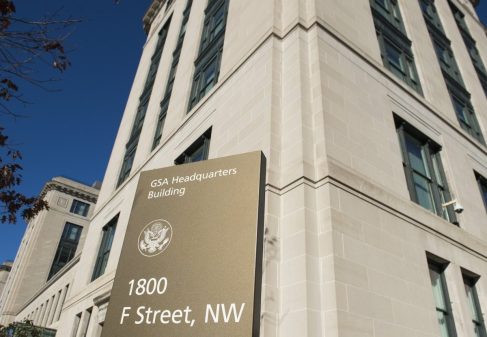GSA tops telework totals through snow closure

The closure of federal government offices in Washington, D.C., and across the northeast caused by the huge storm there cost taxpayers upward of $86 million per day in lost productivity, according to one research firm.
If only the rest of the government was more like the General Services Administration, that cost might have been slashed.
A model of federal teleworking capabilities and activity, GSA said of its 3,800 staff in the Washington, D.C. region, 3,600 employees were eligible to work remotely while federal offices were closed for two days, agency Chief Information Officer David Shive wrote in a blog post Thursday.
“Most GSA employees who could not make it to their offices used a variety of methods to work from home or other remote locations,” Shive wrote. GSA’s virtual private network experiences triple the normal demand on the snow days, its remote access features operated by Citrix saw a 50-percent increase in normal usage, and the agency’s MyView tool, which allows employees to access a full virtual Windows desktop, had “higher-than-average” use from personal and mobile devices, Shive wrote.
“The agency had the right infrastructure and technology support in place to be able to scale up to increased demand,” he said.
GSA is pretty much an anomaly, though, according to Kate Lister, president of workplace research firm Global Workplace Analytics.
Based on the latest report to Congress about the federal telework program, which came out in 2013, just 14 percent of federal employees had teleworked at least once during the previous year, compared to the 47 percent of federal employees who were eligible for telework, which Lister assumes has grown since. Nearly 95 percent of GSA employees, based on Shive’s statistics, were eligible to telework during the recent snow closures.
Lister estimated based on her experience that, during a snow closure, about 20 percent of federal employees overall would work remotely, while agencies like GSA and the U.S. Patent and Trademark Office tend to telework at higher rates based on progressive teleworking initiatives.
Lister’s firm estimates, based purely on salary costs, government losses of at least $86 million a day when D.C. offices are closed. That means that if just the 14 percent of past teleworkers worked remotely during the recent closure, the savings would easily outweigh the entire five-year, $30 million implementation expense of the Telework Enhancement Act, launched in 2010.
While the federal government is notorious for mass closures in D.C. during snowfall, Lister said the private sector isn’t much more effective when it comes to telework. Her firm estimates that a single snow day could cost the entire northeast region — public and private sectors combined — $1.3 billion. And though nearly half of Americans could “perform much of their work anywhere there is an Internet connection,” according to a Global Workplace Analytics release, only 3 percent do so for half or more of their work week on a regular basis.
“It always takes a snowstorm to point out that this is real, we really need to be able to work remotely, when in fact it’s just the tip of the iceberg,” Lister said. Her firm estimates that if about half of feds worked remotely half the time, the federal government would save almost $10 billion a year.






